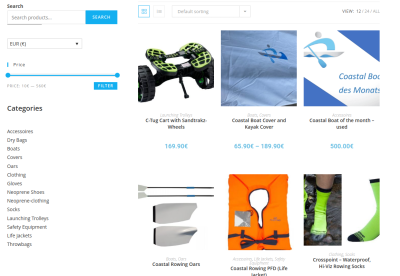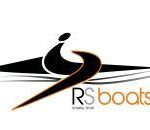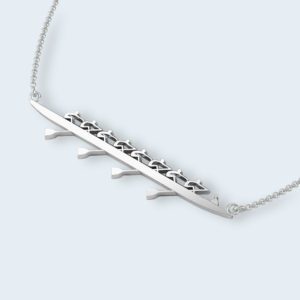Fingers flat on the recovery
What is the exercise for?
Teaching a loose grip on the handle and feeling the weight of the oar(s) in the hand on the recovery.
How the rower does it
After taking the oar(s) out of the water at the finish and feathering the athlete uncurls their fingers from around the oar handle so the oar is balanced under their palm. For scullers, the thumb is also removed from the end of the handle.
With only the palm of their hand in contact with the oar and fingers extended straight not touching the handle, the athlete rolls up the slide on the recovery until they get to the point when they want to square the blade for the next stroke.
At this point they curl their fingers back around the handle and simultaneously roll the handle to square the blade – followed by a normal catch and power phase.
Pointers for the coach to check
This drill teaches three things and the coach should ensure that first the drill is being executed correctly before moving onto the more technically advanced parts
- Are fingers straight and thumb not touching the handle during the drill
- Is the oar handle resting in the rower’s hand palm in the correct place (not under the fingers)
- Has the rower ‘tapped down’ the handle to clear the oar spoon at the finish of the stroke and maintained the same height of the handle during the exercise? The oar spoon should not be touching the water on the recovery
- When squaring, is it completed in a single, smooth movement starting with the fingers curling back around the oar handle?
- Is the squaring action started early enough so it’s fully complete before the athlete reaches front stops / catch position?
- Is the crew all executing the square at the same time?
- Can the athlete adapt the depth of handle press-down to give a greater / lesser clearance of the water surface during the recovery?
- Do the athletes consistently press down the handle to the same place?
- Can the athlete recognise the feeling of the weight of the oar handle in her palm? Does she understand how to use this feeling to control the oar during the recovery?
Extensions of the drill Related exercises
There are lots of ways to vary and extend the challenge to your crews with this exercise so that they always find a newly ‘difficult’ technique to practice. Even skilled athletes need new challenges so try out different ways of raising their game. Here are some we’ve tried
- Alternate stroke open palm and normal hand grip
- Sweep rowing – open palm only for inside hand (practice the turning action)
- Sweep rowing – open palm only for outside hand (practice the pressing down action)
- Pausing at half slide with open palms on the handle
- Pausing at quarter slide with open palms on the handle and adding a double press-down on the handles
- Early square after open palm – start to turn the handle as oars pass over the feet
- Alternate square blade normal rowing with open palm feathered rowing
- Open palm at firm pressure
- Open palm at higher rates
- Use the words “Roll and Slide” to the crew as you coach them on the timing of the square during the recovery. Get the word association of a sliding seat and rolling the fingers back around the handle to make the squaring action to help them activate the correct movement.








This Post Has 3 Comments
I was disturbed by the post implying that the oar should be in or by the palm during rowing.
I did this when I started rowing, and this produced what I characterized as “nervous” sensation while on the power stroke.
What I feel is optimum is as follows. First for scullers. The thumb should be to the outside of the handle. The next three fingers should contact the oar at the first and second joint, so that the fingers and hands form a straight line with the forearm.
If the rower is not strong enough to pull the oar with this grip, they should increase their grip strength by doing dead lifts with heavy weights, hanging from a chinning bar with additional weight, or using grip strengtheners.
For sweep rowers, this is a little more complex. The outside hand is key, since it contributes a majority of the force in the stroke. The small finger should to the outside of the oar, the next three fingers should contact the oar at their first and second joint. Depending on the oar, the thumb establishes the distance between the oar and the rowers palm. The inside arm is more problematical. If the fingers are straight, the arm is crooked. If the arm is straight, the oar is in the palm. Neither is optimum.,so the rower has to pick what is best for them, or for the boat.
For either of these scenarios, there are considerations as to what produces the best boat speed. If the rower uses the increased finger length, they get the same stroke length without coming as forward in the catch, which gives them more force at the catch. Or they can use the more forward finger position to increase their stroke length. Either will produce more boat speed.
During the recovery, it is important for the rower to relax all their muscles as much as possible. Tension in the muscles makes for a more nervous recovery, and uses energy that the rower needs for the power stroke.
You may not consider these of not much importance. But try rowing a pair. A pair that used these techniques will be faster than conventional pairs. If it helps pairs, it will help fours and eights.
David
Thanks for your most clear and well-considered answer. What you say is totally correct and we didn’t want to imply that the oar was fully in the palm in the post.
You are clearly very knowledgable. would you be interested in writing for our blog – maybe a first article on “grip” in sweep and sculling?
Get in touch if you’re interested.
Rebecca Caroe
I agree absolutely with you, the question I would ask is if the oar is in the palm of the hands on the feather were does it go on the square. With my rowers I practice rolling the blade onto the square using the fingers only maintaining the wrists flat.
My addition to the exercise is that we play piano, preferably Chopin ie we on the recovery during this exercise wiggle the fingers this demonstrates that the handle is not being gripped and brings in a little light hearted fun, after all rowing needs a little fun( through demonstrating skill)
I have noticed that rowers who use their wrists to square invariably follow the wrist movement with a downward action causing skying at the catch.